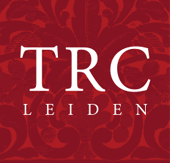Although needle laces have been made on the islands of Malta and Gozo since at least the 16th century, bobbin lace was only introduced to the island in the first half of the 19th century. It is associated with Lady Hamilton Chichester (Lady Harriet Anne Butler, died 1860), who in the 1830's introduced lace makers from Genoa (Earnshawl 1982:107).
She was the wife of George Hamilton Chichester, 3rd Marquess of Donegall (1797-1883), a prominent member of the Anglo/Irish aristocracy. Lady Hamilton Chichester worked with Sarah Austin (1793-1867), who was a prolific translator from German to English and mother of the famous explorer and Middle Eastern specialist, Lady Duff-Gordon.
Sarah Austin visited Malta with her husband, the English legal theorist, John Austin (1780-1859) in 1836. Their aim was to help local women with new sources of income, namely silk lace that was becoming more and more popular with fashionable ladies as part of their crinoline dress ensembles.
 Close-up of a part of a Maltese lace collar showing the characteristic Maltese cross and small leaves (early 20th century; TRC 2007.0645). For more information, click on the illustration.Original Maltese lace is characterised by the plaited strands or braids, the small, plump leaves, sometimes known as ‘wheat ears’ or ‘oats’ as well as the Maltese cross, which has four, equal length arms. Furthermore it generally shows a geometric overall design. Apart from the Maltese cross, all these characteriscs are shared with original Genoese lace.
Close-up of a part of a Maltese lace collar showing the characteristic Maltese cross and small leaves (early 20th century; TRC 2007.0645). For more information, click on the illustration.Original Maltese lace is characterised by the plaited strands or braids, the small, plump leaves, sometimes known as ‘wheat ears’ or ‘oats’ as well as the Maltese cross, which has four, equal length arms. Furthermore it generally shows a geometric overall design. Apart from the Maltese cross, all these characteriscs are shared with original Genoese lace.
The cross was apparently added in the 1830’s by Lady Hamilton Chichester because Genoese lace was very similar, but by adding the Maltese cross it became quickly identified with the island by locals as well as the tourists who were buying this type of lace (Earnshaw 1982:108).
 Early 20th century postcard with women producing bobbin lace on slanting lace pillow. Gozo, Malta (TRC 20217.1419).The use of a thick, soft silk made it relatively easy to produce items of lace as well as making them less expensive than the finer silks that were often used for lace making.
Early 20th century postcard with women producing bobbin lace on slanting lace pillow. Gozo, Malta (TRC 20217.1419).The use of a thick, soft silk made it relatively easy to produce items of lace as well as making them less expensive than the finer silks that were often used for lace making.
One of the first times this type of lace was exhibited was in the Great Exhibition in London, in 1851. In the Malta section to the catalogue to the Great Exhibition, for example, there were references to lace collars, black lace collars as well as knitted laces (1851:165).
Queen Victoria seems to have been a great admirer of Maltese lace, and she is said to have submitted a sample of lace to the Exhibition of Industries, in London in 1881. Her statue in Republic Square in Valletta, the Maltese capital, shows a shawl being displayed over her lap, and the garment may represent a sample of Maltese lace. It is also alleged that samples of Maltese lace were sent to China to be copied; this story may reflect a modern reality. Whether or not she preferred Maltese lace made of silk or of linen remains a moot point; since the late 19th century, linen was widely used for the lace, although linen lace was mostly used for larger pieces, such as table cloths and curtains.
 Cross of the Order of St John (Maltese cross).Maltese lace continues to be made to the present day, although not on the same scale as in the 19th century, and, to some, of much inferior quality, although deep into the 20th century lacemakers were a common sight when visiting Golzo.
Cross of the Order of St John (Maltese cross).Maltese lace continues to be made to the present day, although not on the same scale as in the 19th century, and, to some, of much inferior quality, although deep into the 20th century lacemakers were a common sight when visiting Golzo.
In 1996 a lacemaking programme was set up at the University of Malta - Gozo Centre to promote the production and quality of Maltese lace, and in 2000 the Malta Lace Guild was established. It publishes a newsletter with infomation of developments of Malta lace production, on Malta and abroad. There is also a Koperattiva Ghawdxija tal-Bizzilla u Artigjanat, which is a cooperative producing handmade Maltaese lace. Finally we want to mention the social enterprise called HAJJA, which uses Maltese lace making as a healing tool to improve people's health.
 Lace collar in ecru silk and with its characteristic Maltese crosses and wheat ear patterns (early 20th century; TRC 2007.0645). For more information, click on the illustration.
Lace collar in ecru silk and with its characteristic Maltese crosses and wheat ear patterns (early 20th century; TRC 2007.0645). For more information, click on the illustration.
Bedfordshire lace
Maltese bobbin lace was very popular from the mid-19th century onwards and was copied in Britain, for example, with the newly ‘invented’ Beds Maltese (Bedfordshire Maltese) lace form, a style of bobbin lace that was somewhat disapproved of at the time by lace traditionalists (Earnshaw 1982:108). It soon went out of fashion, partly because of the costs of its production.
Another derivation, so it seems, is Hainault lace, which resembles Bedfordshire lace and which was developed in the late 19th and early 20th centuries in southern Belgium.

